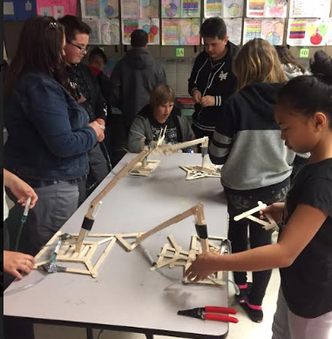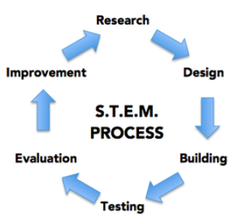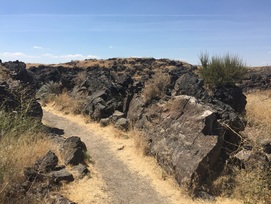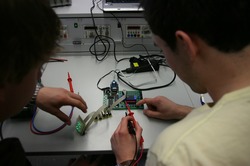In all the years I have been training teachers, there is nothing more important than this. STEM instruction must not be a fad; it must succeed.
|
Recently I conducted a 5-day training in Boston showing educators how to implement STEM and project-based learning at their sites. I have been teaching for three and a half decades, and I have seen the educational pendulum shift many times. Right now, STEM and PBL are hot topics, but will they remain so?
In all the years I have been training teachers, there is nothing more important than this. STEM instruction must not be a fad; it must succeed.
0 Comments
Today I asked on Twitter, “If you could start your career over, what one thing would you do differently?” I expect some interesting responses, but for me, there is one change that stands out. I would be more relaxed and personable with the students.
After over three and a half decades in education, I am finally getting close to a sweet spot. I look forward to the start of the school year and wish I could indeed start my career over with what I have learned.  I’m conducting a bold experiment. Six weeks ago I started teaching a new elective for our third trimester. Even though Mistletoe Elementary is a STEM school, I have more ideas than time, so I offered to teach an elective simply called “STEM”. On the first day, two dozen 6th through 8th grade students arrived, and the first one in the door asked, “How are you going to grade this class?” I answered honestly, “I don’t know; I haven’t thought about it.” Now a month and a half later, I have not issued any grades, yet the students rush to class each day, work from the moment they arrive, complain when they have to stop and clean up, and I have had zero students off task and no behavior problems. “Are we teaching for our past or for their future?” This is the question that California high school educator, Bill Lombard, once asked me. It is one I have stopped and asked myself again and again ever since. We have spent time over the past year looking at an article by Sarah Wiggins titled “What is STEM and why should I teach it?” In the article, Ms. Wiggins listed her top ten reasons for making STEM instruction the foundation for your math and science curriculum.
"STEM requires students to actively engage"I learned early in my career – through the process of many failed lesson plans – that students must be doing something or they are not learning. Learning is not a passive endeavor or a spectator sport. If a student’s primary task was sitting and listening to me, I was asking for trouble. A bored mind is a dangerous mind.
 A half century ago, we could teach content and know that we were preparing students for better employment opportunities. The more content they mastered, the better chance they stood of getting a good job. To some degree, businesses were looking to hire those who knew the most. Today that has changed. Information is readily available, and business wants to hire people who can think and solve problems. As teachers we have long understood that it is not enough to simply present content. We have to create students capable of high-level thinking. For the past few months, we have been exploring the ten best reasons to incorporate S.T.E.M. instruction into our schools. This series is based on an article by Sarah Wiggins titled “What is STEM and why should I teach it?” Ms. Wiggins’ seventh reason is that S.T.E.M. makes failure a learning opportunity. This is the number one reason why I like to teach S.T.E.M.
In the past, I taught a unit of study and then gave students a culminating test. Whether they passed or failed, the state standards and the clock mandated that I move on. Hopefully, most of the passengers were still on the train, but even with the best of my efforts, I lost a few in the process.  Are we putting our students at a disadvantage by educating them in desks? Here is what I mean by that question. Recently I had the opportunity to do some educational work at Lava Beds National Monument in the high desert of California. It was part of a class I was taking through Colorado University on “place-based education.” The course explored the idea of educating students on-site. They are literally located in the place they are studying. How do we foster creativity in our students, and why is it important? Stephan Turnipseed, president of Lego Education, North America, says it best: “Creativity is at the foundation of innovation and is vital for our country's growth and development. Creativity fuels all areas of our country's economy and prosperity.”
 Recently I challenged the students in my S.T.E.M. class to build a vehicle powered by a mousetrap (two for $1 at the Dollar Store). I love seeing the student groups engage so deeply in the process that I could have left the room and I believe they would have just kept working. But something surprised me even more. Two students came into class that week with vehicles they had built at home. They had told their families about the project, and with the help of their dads had tried to improve upon their classroom designs. One of the students was a boy who |
AuthorBrad Fulton is an award winning teacher and nationally recognized provider of professional development with over three decades of experience in education. Categories
All
Archives
December 2017
|
 RSS Feed
RSS Feed